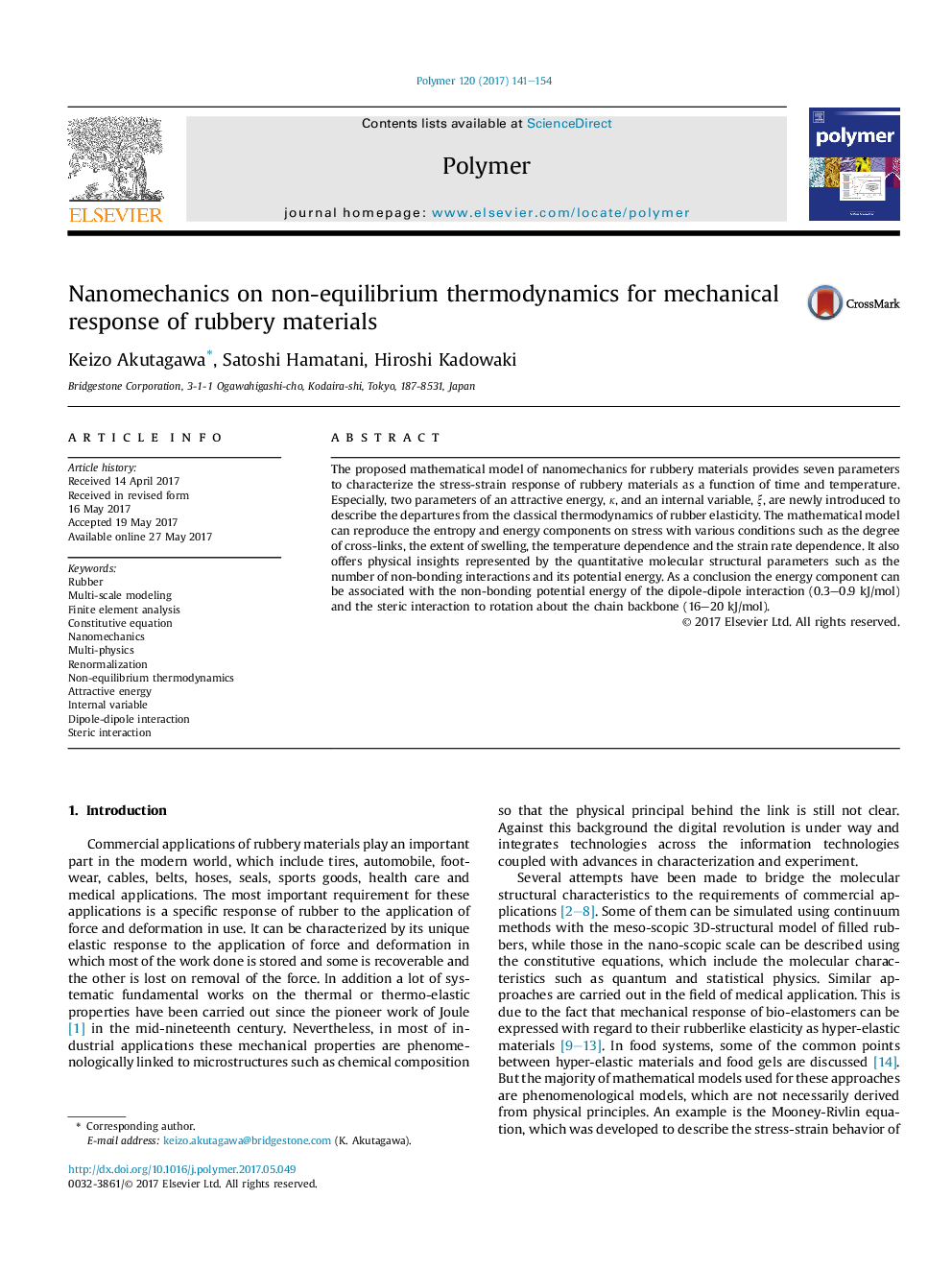| Article ID | Journal | Published Year | Pages | File Type |
|---|---|---|---|---|
| 5178015 | Polymer | 2017 | 14 Pages |
â¢Proposed model is successful in predicting entropy and energy components on mechanical response of rubbers qualitatively.â¢Entropy follows equilibrium rubber elasticity, but energy component is associated with as non-equilibrium thermodynamics.â¢Energy component can be well described by new parameters, the attractive energy, κ, and the internal variable, ξ.â¢Energy component can be described as change of dipole-dipole interactions (0.3-0.9 kJ/mol; long range interactions).â¢Temperature response depends on steric interactions to rotation about main chain (16-20 kJ/mol; short range interactions).
The proposed mathematical model of nanomechanics for rubbery materials provides seven parameters to characterize the stress-strain response of rubbery materials as a function of time and temperature. Especially, two parameters of an attractive energy, κ, and an internal variable, ξ, are newly introduced to describe the departures from the classical thermodynamics of rubber elasticity. The mathematical model can reproduce the entropy and energy components on stress with various conditions such as the degree of cross-links, the extent of swelling, the temperature dependence and the strain rate dependence. It also offers physical insights represented by the quantitative molecular structural parameters such as the number of non-bonding interactions and its potential energy. As a conclusion the energy component can be associated with the non-bonding potential energy of the dipole-dipole interaction (0.3-0.9 kJ/mol) and the steric interaction to rotation about the chain backbone (16-20 kJ/mol).
Graphical abstractDownload high-res image (236KB)Download full-size image
